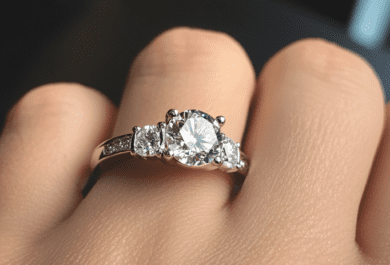A fish-eye is a nasty appearance that you can see just inside the table of a diamond. It looks slightly crazed and dull, just like a dead fishes eye. The fish-eye is a reflection of the girdle (on the opposite side). If the girdle is not polished and is thick the effect looks like a BIG circular inclusion, and can be as bad as an I3 (P3).Fish-eyes are more apparent if the pavilion is shallow 39.5°, the table is large; the girdle is thick and not polished. Combinations of these factors worsen the effect.
Holloway Cut Adviser takes fish-eye into account. Fish-eyes occur between the following pavilion depths and table sizes:
41 degree pavilion and 72.2% table
39 degree pavilion and 58.4% table
Diamonds with these proportions show fish-eyes that require no tilt to see them. If the table gets 1% bigger you see a 1% more fish-eye.
We down grade fish-eyes in value, a bit like an inclusion, because that is what they look like.
HCA will give “do not buy this diamond under any circumstances as it is a fish-eye” comment if the fish-eye is very bad.
A small amount of tilt to see a fish-eye is acceptable because these diamonds have a very good spread and look very big for the money. If the fish-eye can only be seen with 5 degrees or more tilt then we consider the diamond to be ideal.

Fish-eye cut ray path


Fish-eye examples
Diamond Grading ABC
V Pagel-Theisen














